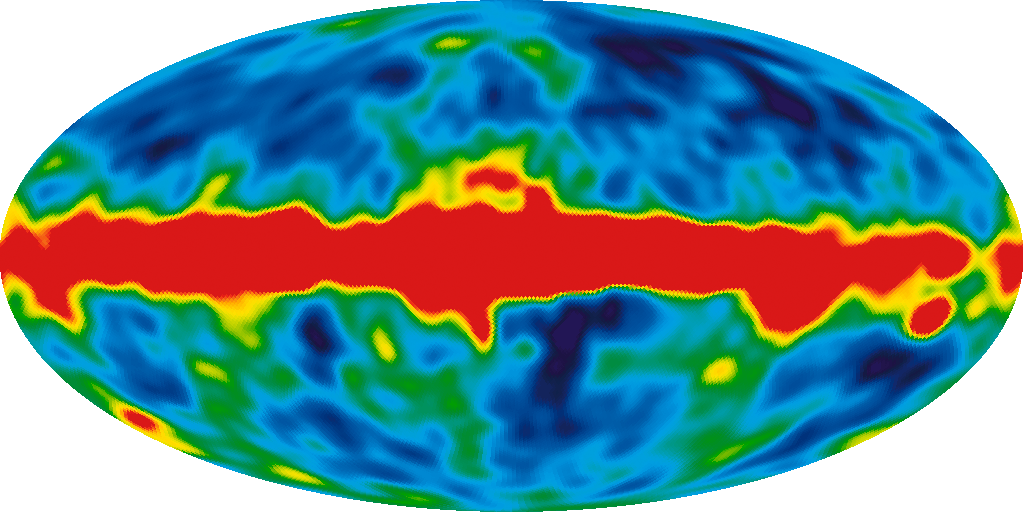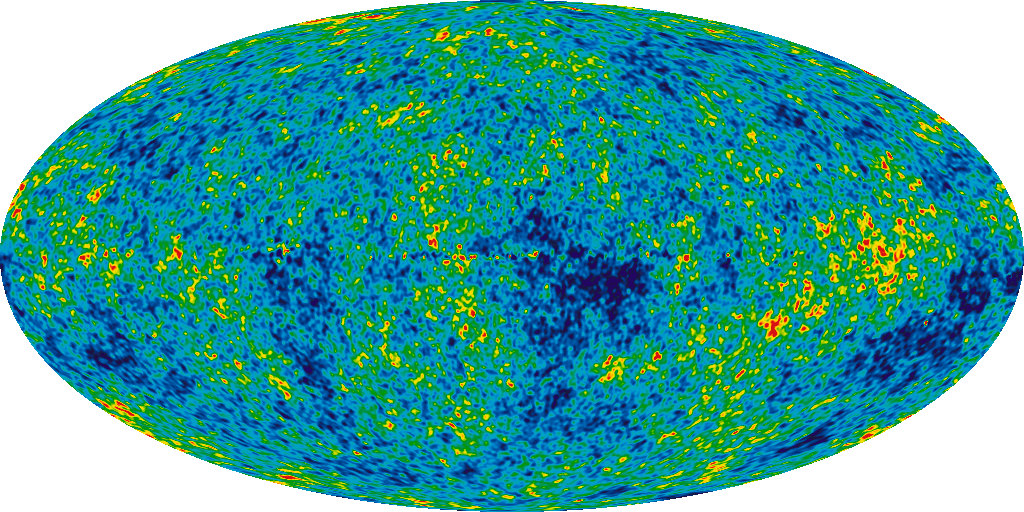WMAP Special Exhibit
Old light, but new to us – variation in the microwave background
Now let's examine the nature of this microwave background. Because this light was released everywhere at once, it is all around us. This light was created by a very unique event, so fortunately it has a very specific energy distribution that makes it easy to identify, similar to a fingerprint. That is, it is easy to see once you know what you're looking for.
The cosmic microwave background was actually discovered by accident in 1964 by Arno Penzias and Robert Wilson of Bell Laboratories. They were trying to eliminate static interfering with radio experiments. They tuned out local radio stations and even built pigeon traps to rid themselves of birds nesting in and around their radio receiver, because the pigeon droppings were a strong source of static.
Despite their best efforts, Penzias and Wilson couldn't eliminate a constant low-level noise. They came to realize (after a good deal of iteration with cosmologists at Princeton University) that this noise had been lingering for 10 billion to 15 billion years, predicted by the Big Bang theory. They won the 1978 Nobel Prize for it.
COBE was the first satellite to study the cosmic microwave fossil. In 1992, COBE found that there were slight temperature differences in this evenly spread blanket of light. The universe has cooled down considerably since its early days. Even with the multitude of stars, the microwave background only averages 2.78 degrees above absolute zero. The temperature differences are less than ten-thousandth of degree from region to region.

The temperature variations in the cosmic microwave background as detected across the sky by COBE. (Credit: NASA/WMAP Science Team)
What do these temperature differences mean? The temperature differences, or fluctuations, we see today point back to density differences in the early universe. Certain regions were denser and hotter than other regions, however slight. But you have no doubt heard the expression "give an inch and they'll take a mile." The slight differences in density were the seeds that grew into galaxies and galaxy clusters.
Through the force of gravity, dense regions pulled in more and more matter, even as the universe expanded. The more massive they became, the more matter they could attract through gravity. Less dense regions did not grow. It's the old story of the rich get richer. Those early, dense regions accumulated enough matter to form stars and galaxies. Less dense regions evolved into modern regions of seemingly empty space, called voids.
The precise temperature fluctuations in the microwave background from region to region speak specifically about how this modern structure formed. The development depended on the shape of the universe and the type and amount of matter and forces that exist. Different shapes and different amounts of matter would leave their marks as different temperature fluctuations from region to region.
COBE had a resolution of about 7°, just enough to provide a fuzzy picture of the temperature fluctuations. WMAP has a resolution of 0.2° (about 35 times better), enabling scientists to study the microwave background at the smallest angular scales.

The temperature variation in the microwave background as seen by WMAP after 9 years. (Credit: NASA/WMAP Science Team)
Published: July 2001
Text Reviewed: September 2018


